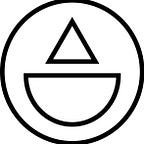8. Lagrangian, Eulerian, and Autonomous Sampling
The ocean is a vast and complex system that plays a critical role in the Earth’s climate, ecosystems, and human societies. Understanding the dynamics of the ocean requires sampling strategies to represent the continuous fluid field. Lagrangian and Eulerian sampling are two commonly used approaches in oceanography that allow scientists to study ocean currents, temperature, salinity, and other variables. In this article, we will explore the differences between Lagrangian and Eulerian sampling and how they are used in oceanography.
Lagrangian sampling is a method where scientists track the movement of particles that move with the flow of the ocean. Hence the measurements are recorded as the sensors move with a water mass. Lagrangian sampling allows scientists to understand how the ocean’s properties change over time and space, and how they are affected by external forces such as winds, tides, and oceanic currents. By using technologies, such as drifters, and track their movements, scientists can create a detailed map of the ocean’s circulation patterns and its variability over time.
On the other hand, Eulerian sampling is a method that measures the properties of the ocean at a fixed location over time. Scientists use fixed buoys, moorings, and oceanographic instruments to measure the properties of the water at a specific depth, location, or along a transect. These measurements are then used to create a time series of the ocean’s properties.
Eulerian sampling allows scientists to understand how the ocean’s properties change over time at a specific location. By monitoring the ocean’s properties at a fixed location over time, scientists can detect trends and changes in the ocean’s properties.
Both Lagrangian and Eulerian sampling are important methods in oceanography, and they are often used together to complement each other’s strengths. Lagrangian sampling is useful for studying ocean dynamics, such as currents and eddies, while Eulerian sampling is useful for studying long-term trends and changes in the ocean’s properties.
In contrast, autonomous sampling disrupts these two sampling paradigms via pre-determined or automatic navigation. Technologies such as AUVs and ROVs do not need to strictly follow the flow of water masses (Lagrangian) nor become fixed in place (Eulerian). Autonomous sampling is especially useful for sampling a specific areas or ocean features of interest, thus offers an additional robust sampling method to great enhance ocean data collection for stakeholders.
Ocean Motion Technologies is here to support all three forms of ocean sampling. By providing a cost-effective, reliable power supply at sea, we enable high-frequency big-data gathering on data buoys (Eulerian), UUV charging/docking capabilities and gilders (autonomous), and inter-platform telemetry for floats, and drifters (Lagrangian). Through our wave-powered data platform, we strive to support an Ocean of Things paradigm and a more connected blue economy.
Please visit www.oceanmotion.tech to learn more.
The editing of this article was powered by deepsage.ai
References
